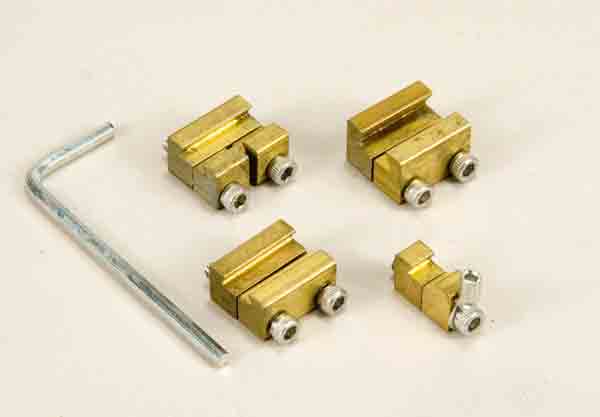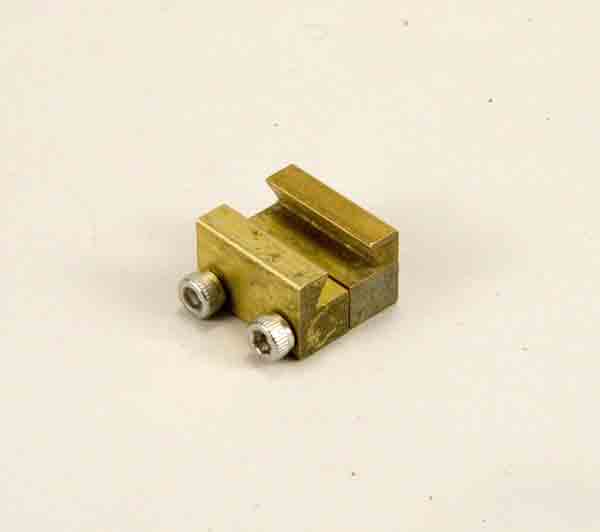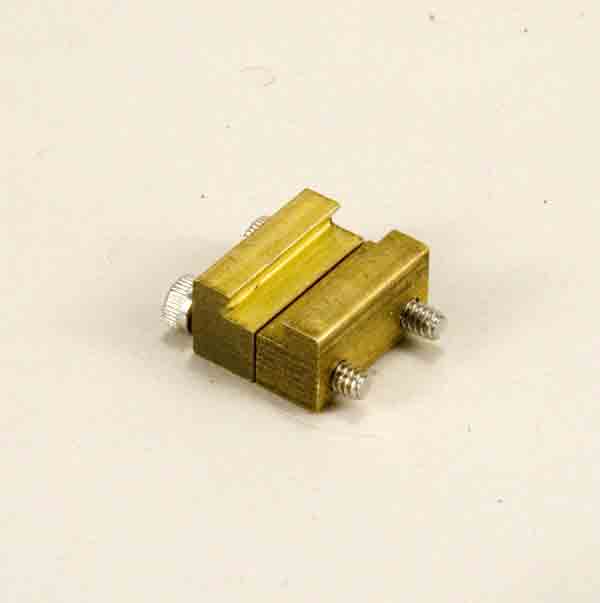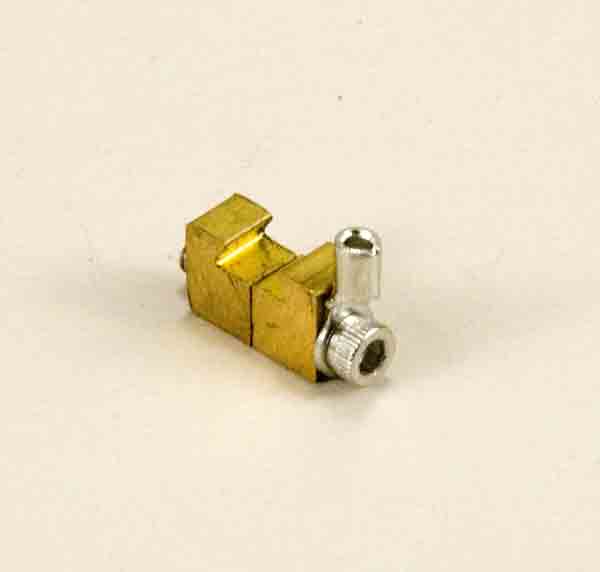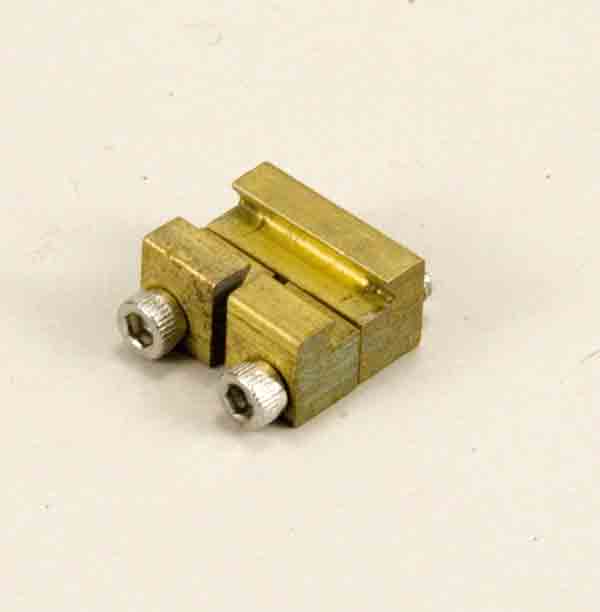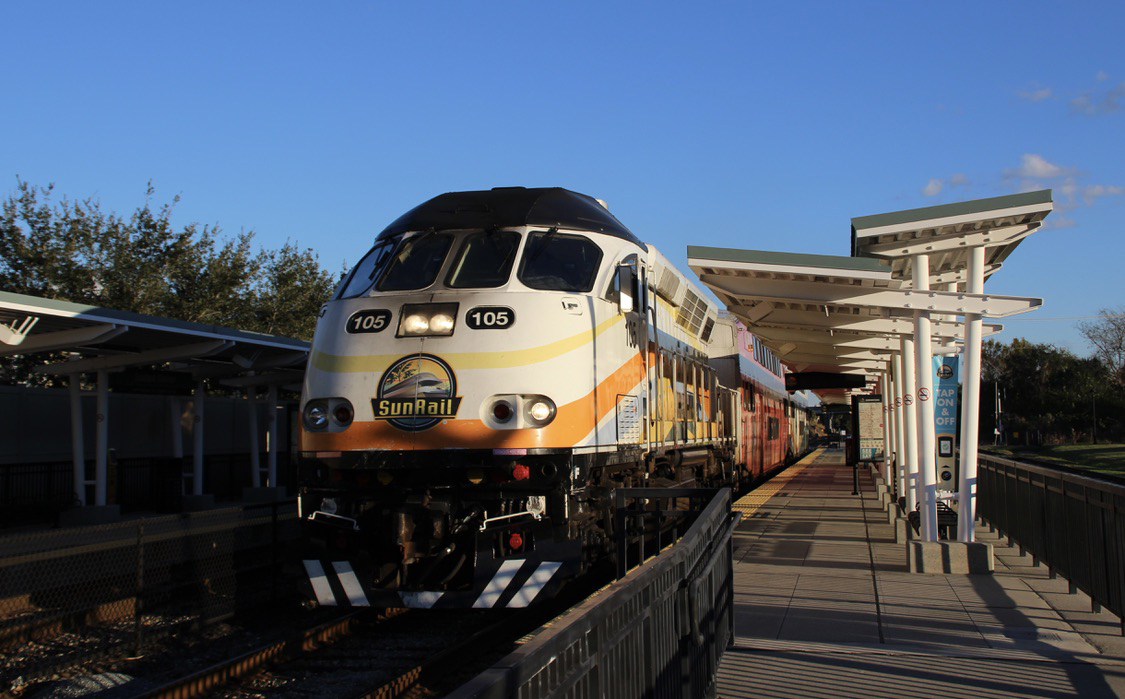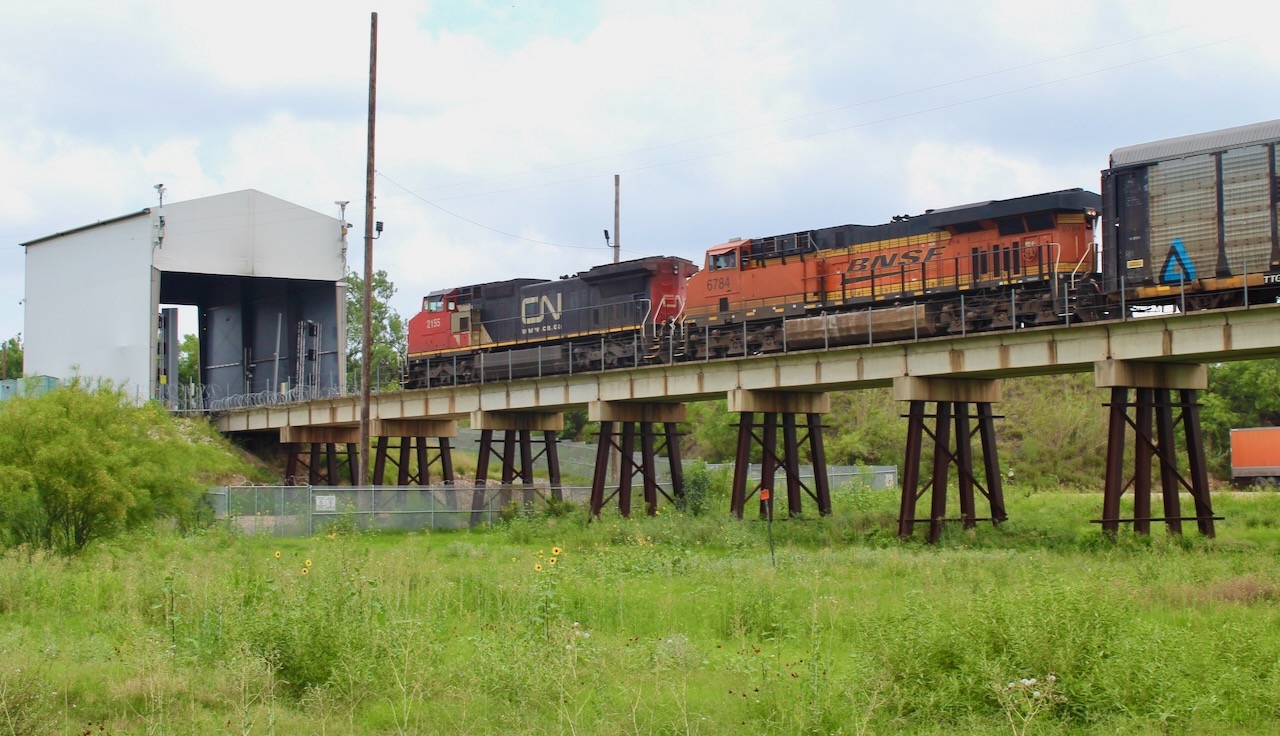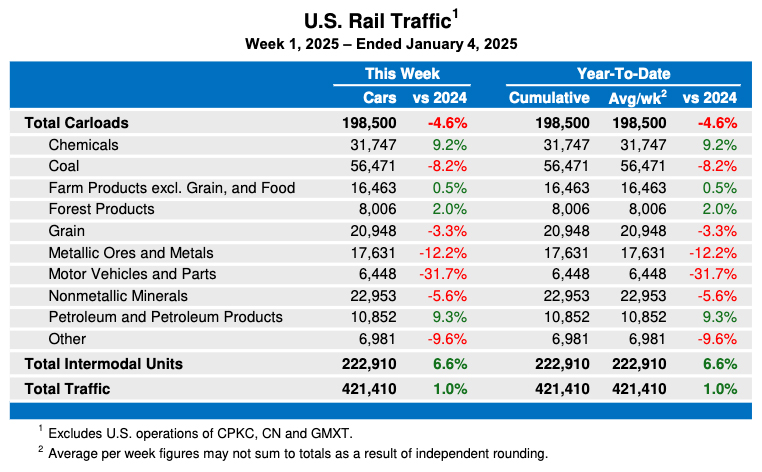Rail clamps for code-332 rail
American Mainline (AML)
33268 Central Avenue
Union City CA 94587
Prices: Standard (#G102-01), $20/10; Universal (#G102-02), $20/10; Over joiner, (#G102-
03), $20/10; Power clamp (#G102-05), $4/4
Web site: www.americanmainline.com
Brass clamps with stainless-steel screws for securely joining rails
Pros: Will securely and immovably join rails; relatively simple installation; can, in most circumstances, be installed on track in place
Cons: Clamps can be unsightly, marring the visual continuity of the rails; over-joiner clamps not so effective
Our review samples come in four types, as follows: Standard, for clamping two similar rails without additional rail joiners; Universal, for clamping dissimilar rails of the same height; Over-joiner clamps, for clamping over slide-on joiners; and Power clamps, small clamps with electrical-connector tabs for providing power to the rails. Each type comes packaged in bags of 10, except for the power clamps, which are four to a bag.
The clamps are made of brass in matching halves. When together, there is a dove-tail formed into which the bases of the rails sit. A stainless steel, socket-head screw is then used to clamp the two sides together, thus securely locking the rails together. An Allen wrench is provided in each bag for screw tightening.
I tested the standard clamp on a variety of different rails, including LGB, Hartland, and AML. I tightened the screws to what I felt was an excessive amount. The joiners and the screws held just fine. When in place, the bottoms of the joiner halves do not touch. However, with a great deal of force they can be made to touch, the bottoms thus forming a shallow “V.” With the joiner so attached, I held one rail in the vise and pulled on the other as hard as I could. The joiner held fast-I couldn’t budge the rail.
The over-the-joiner clamps are similar to the standards but with a wider dovetail for rails that already have slide-on joiners. I have always been skeptical of the efficacy of this type of joiner. Not only must it grip the loose slide-on joiner but it must also compress it to the point that it will grip the rail as securely as a clamp-on joiner by itself. I deliberately found some rails with fairly loose slide-on joiners. I clamped on some of the over-joiner clamps, giving them the same treatment as the others. I tightened the screws as much as I could, bringing the bottom sides of the clamps together. I held one track in the vise and gave the other a tug. Although the joint was definitely tighter than with the loose slide-on joiners, I was still able to disassemble the track, confirming my suspicions.
I didn’t have dissimilar code-332 rails on which to test the universal clamps. These differ from the standard clamp in that half of the clamp is a single piece while the other half is in two pieces, with a screw for each piece. The idea is that if the feet of the two dissimilar rails are not the same width, the divided clamp will compensate for the difference. This is no doubt true, as far as clamping power goes. However, if the feet are dissimilar enough to require a clamp like this, the fact that one edge of each rail will be in perfect alignment with the other will necessarily mean that their centerlines will not be colinear and there will be a bump as the train goes past. However, this might be only a tiny difference and not worth worrying about.
The power clamps are basically half-clamps, whose purpose is to make electrical attachment to the rails easy. There is a tab, trapped by the screw, into which a wire from your power source may be inserted, then the tab is crimped or soldered to hold the wire in place. This works well.
These are well-made products that mostly do the jobs for which they were intended. It is up to you to determine their suitability for your own particular circumstances.





